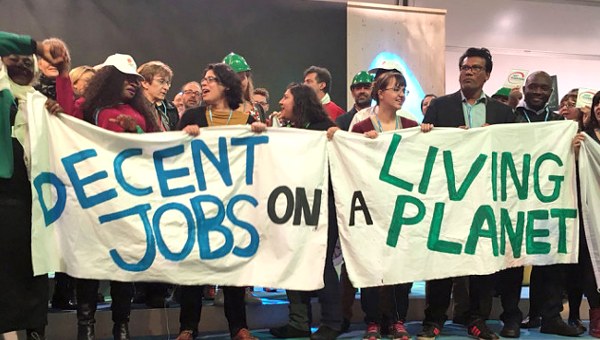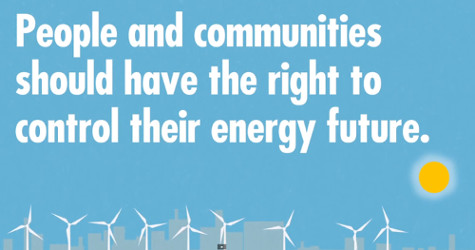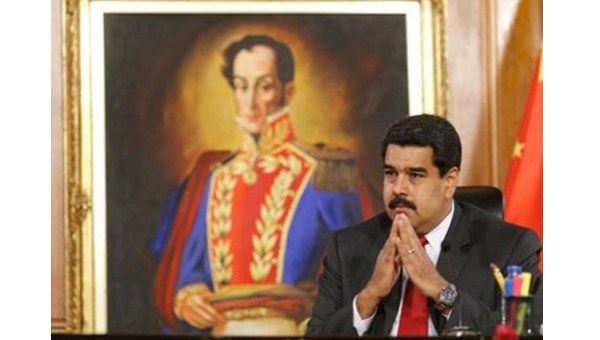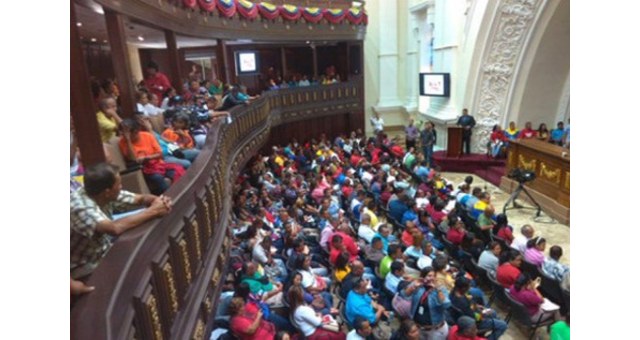Keeping Power With the People: Puerto Rico’s Energy Future
Puerto Rico is now at the center of the global debate about climate resiliency, the potential of renewable energy technologies, and the best way to transition away from fossil fuels. To some extent, it has compressed the struggle for the world’s energy future both geographically and temporally. The whole system was shut down by an “extreme weather event” in the form of hurricane Maria that hit the island on September 16, 2017. This scale of disruption has never happened before – not in Puerto Rico, not in the United States, and not anywhere in the modern world. What was once a discussion about the future of energy has now been transplanted firmly into the precarious present.
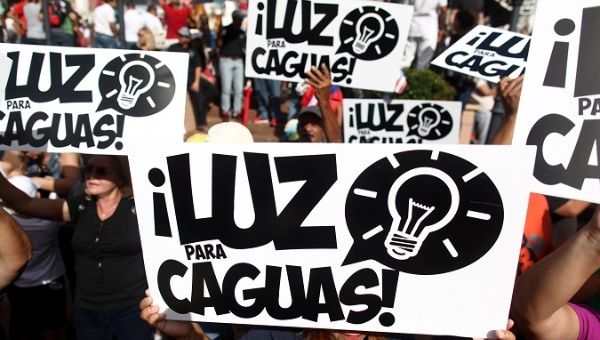
Hurricane Maria completely knocked out Puerto Rico’s electricity grid, leaving the island without any power. As of this writing, four months have passed and still 45 per cent of the island’s population is without electricity. This is the longest power outage in U.S. history. By mid-January 2018, only 20 per cent of the island’s traffic lights were functioning. Of nearly 31,000 new utility poles ordered from the U.S., almost 19,000 had still not arrived. Hundreds of schools, while holding classes, were operating without electricity.
Puerto Rico’s Public Electric Power Authority (known as PREPA), which since the mid-1970s has provided virtually all of the island’s electrical power quickly became the target of an avalanche of criticism regarding how it responded to the disaster. These criticisms inflicted fresh damage on PREPA’s already sullied reputation for poor management, neglect of infrastructure, and deep indebtedness. PREPA was also criticized for dragging its feet on the development of wind and solar power. Puerto Rico has significant wind and considerable solar potential, but only 3.3 per cent of its pre-Maria power was generated by renewables.1 Oil generates 47.4 per cent of Puerto Rico’s power; about 33 per cent was generated by gas, and roughly 16 per cent from coal-all of it imported. In 2010, the island’s legislature introduced a renewable energy target that essentially instructed PREPA to source 12 per cent of energy from renewables by 2015-a target that it failed to meet.2
Assets for Sale
On January 22nd, Puerto Rico’s governor Ricardo Rosselló announced his intention to sell “PREPA assets.” The utility, he stated, “has become a heavy burden on our people, who are now hostage to its poor service and high cost.” Selling PREPA’s assets to private companies will, said the governor, “transform the generation system into a modern, efficient, and less expensive one for the people.” It would pave the way for one “based on renewable and environmentally friendly sources… We have the opportunity not only to make a new energy system, but to be a global model.” Business representatives applauded the announcement, with one of them stating, “For many years the private sector has requested the total transformation of the energy system in Puerto Rico, which, due to its inefficiency, prevents our economic development.”
The Sun Gods Speak
The decision to privatize PREPA was surely influenced by the actions of renewable energy interests outside of Puerto Rico, for whom Maria was a cloud with a solar lining. Indeed, a buzz of excitement swept across the green lists and blogs when, in late October, with most of the island in darkness, Tesla’s Elon Musk delivered hundreds of solar panels and energy storage batteries to Hospital del Nino in downtown San Juan near the Condado Beach area. Forever the entrepreneur, Musk chose to help a hospital in a wealthy commercial area-a politically strategic choice and a first-rate photo-op. According to one writer, “The island presented [Musk] with the perfect opportunity to test his theory that you could use solar panels and batteries to create microgrids to power people’s homes and even their cars, Teslas of course.”
Meanwhile, Virgin Group leader Richard Branson quickly enlisted the help of his friend Amory Lovins, arguably the founding father of the theory of “green capitalism.” In the 1970s, Lovins argued that the future scarcity of fossil fuels meant businesses should invest in renewable energy and energy efficiency in order to position themselves for the coming green bonanza. Unfortunately, the fossil fuels did not run out; instead more were found – under forests, in shale rock formations, and in deep ocean areas like the arctic. Those who invested in renewables only made money by convincing governments to directly subsidize them, to force utilities to pay above-market prices for solar and wind power-or preferably to do both.
In mid December 2017 Lovins’ Rocky Mountain Institute (RMI) released a report called The Role of Renewable and Distributed Energy in a Resilient and Cost-Effective Energy Future for Puerto Rico. After consulting “stakeholders” – the majority of those listed were corporations, including Tesla – the paper made a strong case for the introduction of new energy technologies such as microgrids and energy storage systems.3
The findings of the paper had an immediate impact on the politics of the island. This is because many of its proposals regarding microgrids and storage technologies (proposals that are hardly original) make perfect sense. But the Institute was not entertaining the idea that the island’s next system should remain publicly owned. Quite the contrary: “What is needed is a coordinated effort by the Puerto Rico government, regulatory commission, and utility to catalogue, prioritize, and competitively procure potential renewable and distributed energy projects…while supporting the least cost and highest value in the long run.” The terms “competitively procure” and “highest value” make it clear what RMI thought should happen: Hedge-fund financed private power producers, project developers, and technology companies should have more control over the island’s power generation, transmission, and distribution systems.
Green Colonialism?
But Governor Rosselló’s claim that the privatization of PREPA will mean that Puerto Rico will be “a global model” for a new cleaner and greener energy system will surely come back to haunt him. First of all, it is very likely there will be no full-on privatization of PREPA. No private interest is going to buy PREPA as it is – absent some backdoor deal to make the offer too good to refuse. The demand for electricity has been falling steadily as a result of recession, migration, and poverty. Furthermore, the island’s energy infrastructure is about 44 years old, compared with an average 18 years on the U.S. mainland. And the worrying prospect of more extreme weather events is not exactly an enticement for potential buyers.
So what will privatization look like? In a revealing but seemingly innocuous phrase, Rosselló’s announcement referred to “a model of privatization of power generation and a concession, term-defined, of energy distribution and transmission.” What does “concession, term-defined” mean? Concession agreements between governments and private corporations normally include rights to use (and profit from) certain pieces of an infrastructure or service for an agreed duration. From the dawn of the colonial period, concessionary companies were used by colonial administrations all over the global South to transfer wealth from the colonized “periphery” to the colonial “core.” Puerto Rico now faces the prospect of being a source of revenue and profit for wind and solar multinationals and technology companies. These companies are not interested in providing a universal service with equal access to all. They have their eyes on providing power to those who have the capacity to pay.
It seems very likely that, if Rosselló and private renewables’ companies get their way, PREPA will be broken up (or, in privatization speak, “unbundled”) and private transmission and distribution companies will be lured to the island or be established by PREPA’s top management who, as was the case in other parts of the world where power was privatized, would see themselves transformed from public servants to corporate CEOs.
In terms of generating electrical power, the global experience has shown that wind and solar projects can only make profits by way of favorable “out of market” arrangements, such as power purchase agreements (or PPAs) between developers and the utility or another public entity, normally over a 15- or 20-year period. PPAs offer “certainties” to investors and developers, but this invariably results in higher prices for users (to cover the additional costs of private financing, profit, etc.)4
Because Puerto Rico’s power system presently depends on imported fossil fuels, electricity costs have been higher than on the mainland. But this does not mean that private renewable energy will lead, as the governor claims, to a reduction in prices. The price will be determined by the terms of the PPAs, and if history is any guide prices will rise, not fall. And with the demand for electricity falling in Puerto Rico, this will mean every user will be required to pay more in order to cover investors’ costs and profits. This is not a reason to hold back on renewables; rather, it merely makes it imperative to reduce costs by eliminating profit and reducing the cost of borrowing capital based on commercial rates of return.
Keeping it Public, and the Role of Unions
The fight against the privatization of PREPA will be difficult. The utility does not have a reputation for providing efficient, reliable, cost-effective service. But Rosselló’s plan will take up to three years to implement, so there is time to build a broad-based campaign. The power system is not the only service threatened with privatization in Puerto Rico. The island’s political and social elite – to say nothing of the U.S. hedge funds operating on the island and members of the Fiscal Control Board – had already been looking to privatize potentially profitable public services, including health care and education along with parts of the power system. And fighting the privatization of public services is already a priority for the island’s progressive forces.
Progressive labor has an important role to play. In late October 2017, before the announced privatization, Trade Unions for Energy Democracy (TUED) organized a global labor conference call on the future of Puerto Rico’s power sector. On the call was Ángel Figueroa Jaramillo, the president of Puerto Rico’s principal power sector union, the Electrical Industry and Irrigation Workers Union (Unión de Trabajadores de la Industria Eléctrica y Riego – UTIER). UTIER represents workers at PREPA. Jaramillo called for a “just transition” for the sector, which must move from being based almost entirely on fossil fuels to a distributed renewables-based system. Jaramillo added, “PREPA is a public good that belongs to the people and not to the politicians.”
The recent attacks on PREPA were, says UTIER, part of a broad-based campaign against anything public. The predatory interventions of hedge-fund interests caused a large portion of PREPA’s already declining revenues from power generation to be used to repay debts, meaning less funds were available to maintain and improve the utility’s aging infrastructure. UTIER maintains that the island’s government, the Board of Fiscal Control, and PREPA’s upper management collectively impeded the post-Maria recovery effort in order to make privatization seem like a positive step.
Following the announcement that PREPA would be privatized, UTIER denounced the plan, stating “For decades we have warned how various administrations have undermined workers and intentionally damaged the infrastructure of PREPA. This was intended to provoke the people’s discontent with the service in order to privatize, to strip us-the people-of what is ours.” For UTIER, PREPA’s actions before and after Maria reflect the corruption of the public service ethic that has corroded PREPA from within. Top management often looks to privatization as a means of escaping publicly regulated salary structures. For example, the privatization of Con Edison in New York in 1998 saw the pay levels of its top management climb astronomically. Just prior to the lock-out of the Utility Workers Local 1-2 in July 2012, CEO Kevin Burke was pulling down an $11-million annual salary.
PREPA, said Jaramillo, needs to be reclaimed politically to serve the public good. It’s estimated $9-billion debt should be cancelled or renegotiated. A reformed, transparent, and democratically controlled PREPA can then work with communities to develop distributed solar power under public and local-level control. These sources would need to be connected to a reliable grid – one that can serve all the people equally. Such a restructuring will take a number of years. Microgrid systems under community control have real potential, but they should not become a means for wealthier communities to generate power for themselves and then expect to come back on to the grid when the sun stops shining or the batteries run out, and storage technologies are expensive and still relatively untested.
Simple Economics
With the old public systems, the cost of electricity was tied to the costs of installing, maintaining, and upgrading the system. Such systems worked fine – and they would work for large-scale renewables too. Everyone was connected. Most of the territorial U.S. was electrified as a result of the New Deal and the development of publicly owned and operated rural cooperatives, almost 900 of which still exist today. Since World War II, most of the global South has been electrified by way of public electrification programs that were set up as national and human development projects, and not as a way of making money for energy companies and hedge funds.
But what about the costs? Here several factors need to be considered. First, a report prepared for Rosselló and FEMA from Navigant Consulting estimated that rebuilding and upgrading Puerto Rico’s grid will cost as much as $18-billon.5 If funds are committed to this effort, they will surely come from public sources and therefore should not be used to simply clear the path to privatization and profiteering. Rosselló’s plan to privatize key parts of PREPA will be a three-year process, thus presenting a scenario where private companies will have a rebuilt and upgraded grid handed to them on a platter.
Second, the cost of public renewable power is lower than would be the case under a system of PPAs, where borrowing and transaction costs are much higher, and profits are then added on top. As much as they make the headlines, figures like Musk and Branson are not the pioneers of renewable energy (Branson has made his money from airlines and buying up once-public railway systems). Globally, publicly owned development banks have been driving renewables. Ironically, private companies have made their money significantly due to low-interest loans – because the lenders are not motivated by profit, but are pursuing policy commitments such as emissions reductions and clean-energy targets.
Third, in many parts of the world the public is already paying for renewable power, but the benefits typically go to private companies. In the U.S., wind and solar power received 54 per cent of federal energy subsidies in 2013, but produced only 4.5 per cent of total U.S. electricity. The subsidies come in the form of tax credits, which means that incentives to encourage renewables are paid for by the public when states impose taxes in order to make up for the tax revenue lost through subsidies. If renewables were deployed as a public service there would be no need for incentives – solar and wind would simply be public infrastructure, and job numbers would actually grow as a result of scaled-up deployment.
Public renewable power may or may not be cheaper than power generated from coal or gas, but it will certainly be cheaper than renewable power generated for private gain. The public utility, PREPA, can be reclaimed and restructured in order to ensure, first, that the energy transition can be planned and implemented over a period of years and that renewable sources of energy serve everyone – and not just those who can afford solar panels, microgrids, and battery systems. Space can be created so that communities have a real voice in the installation, operation, maintenance, and management of local energy systems with a strong emphasis on conservation and efficiency. But public-worker control of the overall service is also important, because this is where decisions about the direction of the island’s energy future will need to be made. The goal here is not to sell electrical power to the grid for profit, but to make sure systems are operating well and are responsive to public needs and concerns.
The people of Puerto Rico may come up with another way of doing the energy transition. But they must be given a choice-and that includes the choice to keep the power system fully in public hands. •
New Labor Forum, Spring 2018, forthcoming.
Endnotes
- Prior to Maria Puerto Rico has installed just 120MW of solar and only 22MW of wind.
- The targets mandated were 15% renewables by 2020 and 20% by 2035.
- Microgrids are small-scale power grids that can function independently of the larger transmission system. So if there is a problem with the centralized generation and main transmission lines, users can still-under certain circumstances-continue to access electricity.
- See TUED Bulletin #68.
- Puerto Rico Energy Resiliency Working Group (Navigant Consulting) Build Back Better: Reimagining and Strengthening the Power Grid of Puerto Rico.


